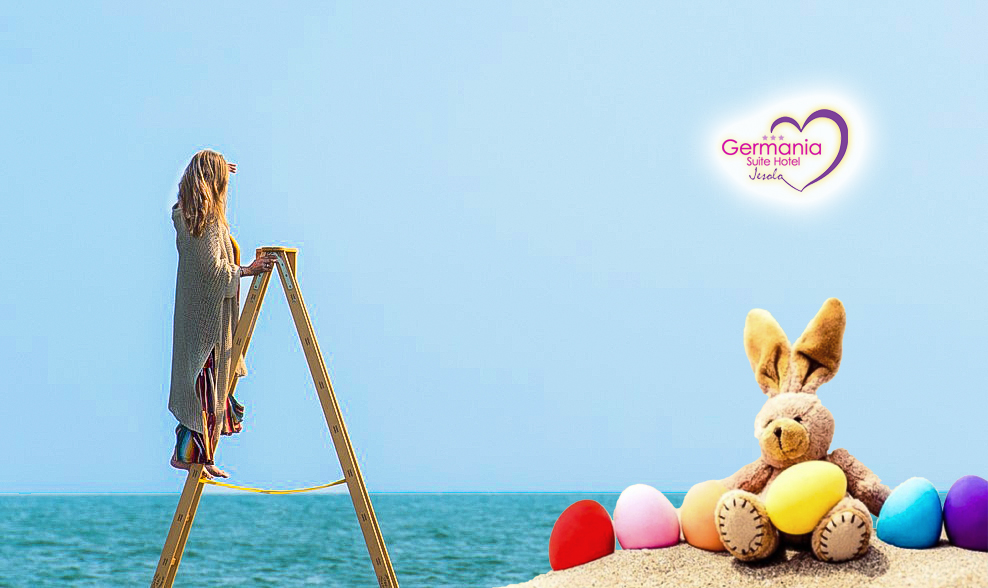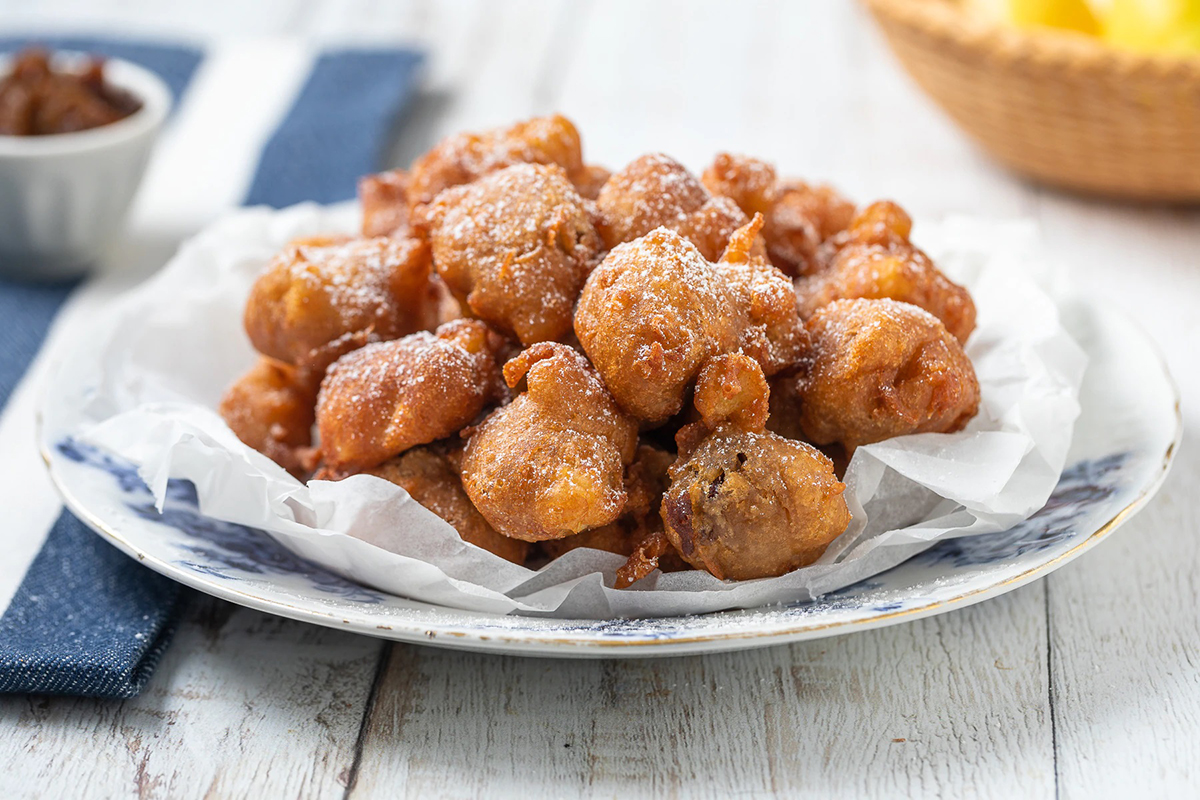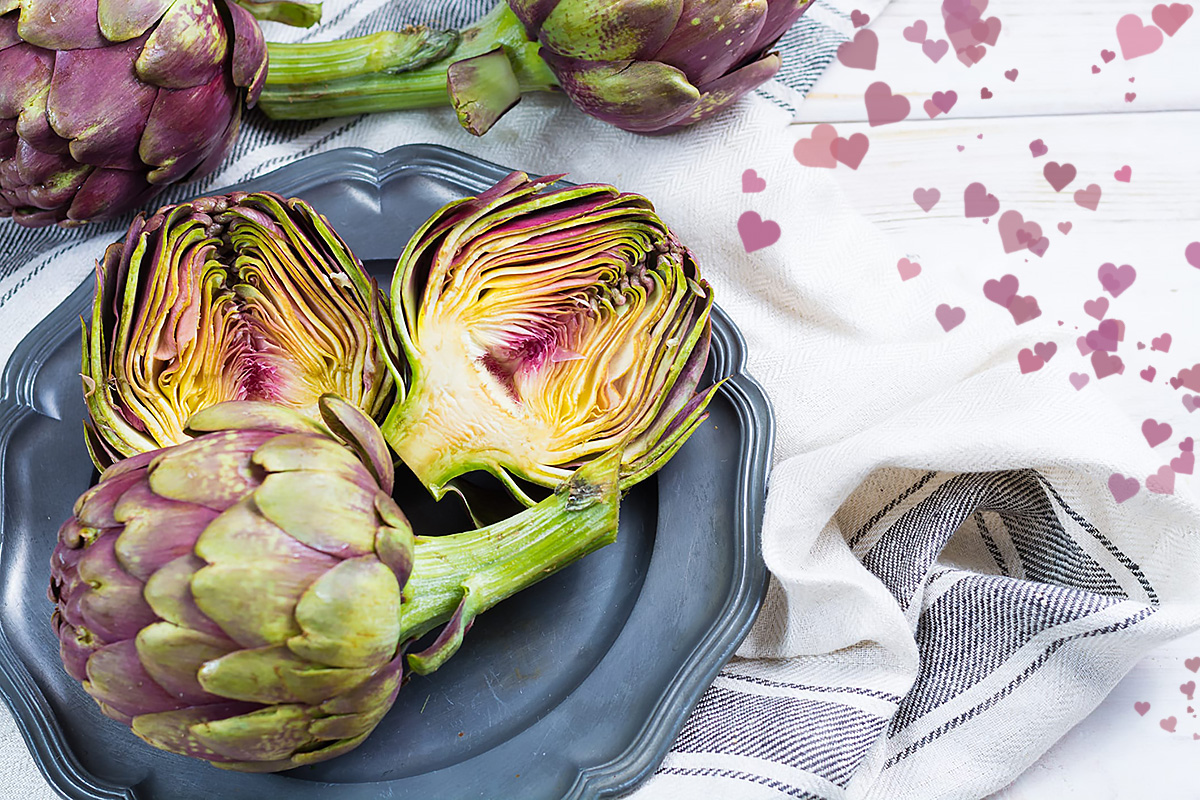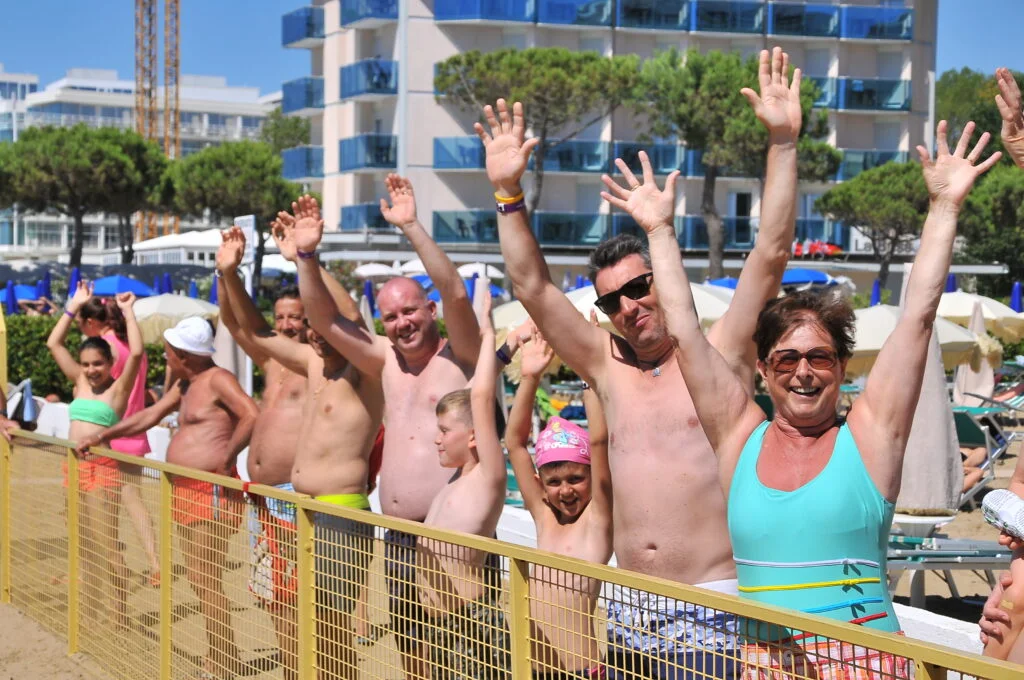The most beautiful maidens.
For the glory of Venice!
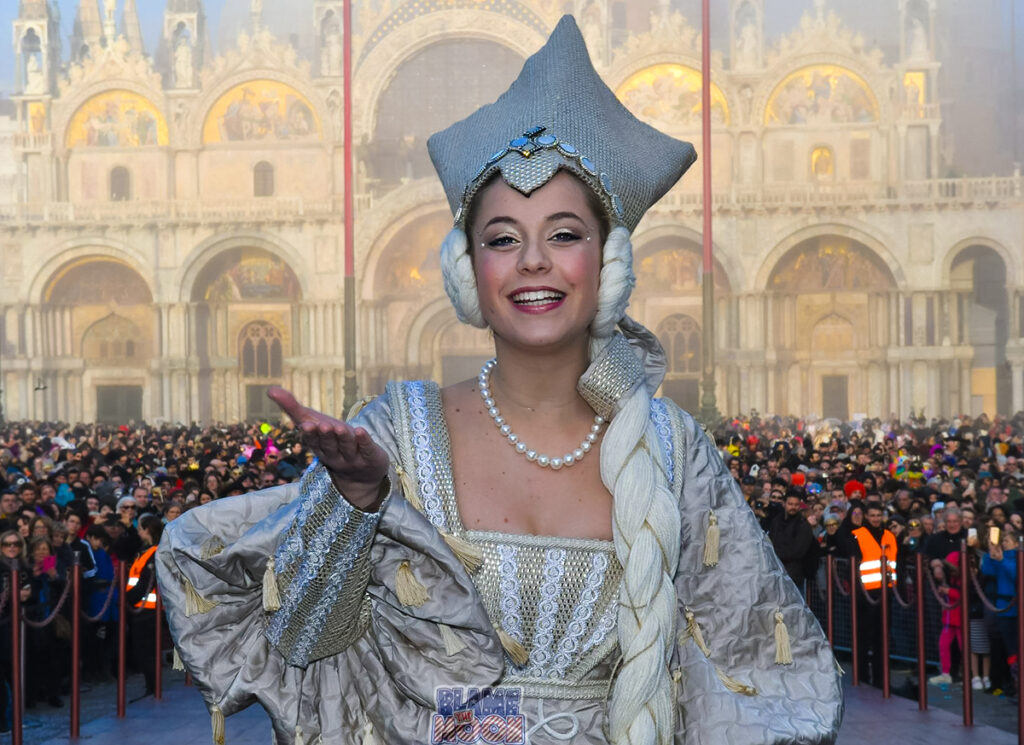
Since the beginning of the 9th century, every year on February 2nd, the day of Mary’s purification, twelve young girls from the people, chosen to represent the entire city along with their promised spouses, gathered in the Church of S. Pietro di Castello, the seat of the Bishopric of Olivolo, to collectively receive the nuptial blessing.
From the participants in the blessing, the twelve most needy women were selected: they wore sumptuous attire and adorned themselves with jewelry of inestimable value, all generously loaned from the main churches of the city.
For that day, the state provided jewelry for the brides, and the patrician families even contributed donations to establish their dowry, each girl bringing it to the church in decorated wooden boxes, specially built and called ‘arcelle’ or ‘capselle’.
Poor, humble,
...and beautiful!
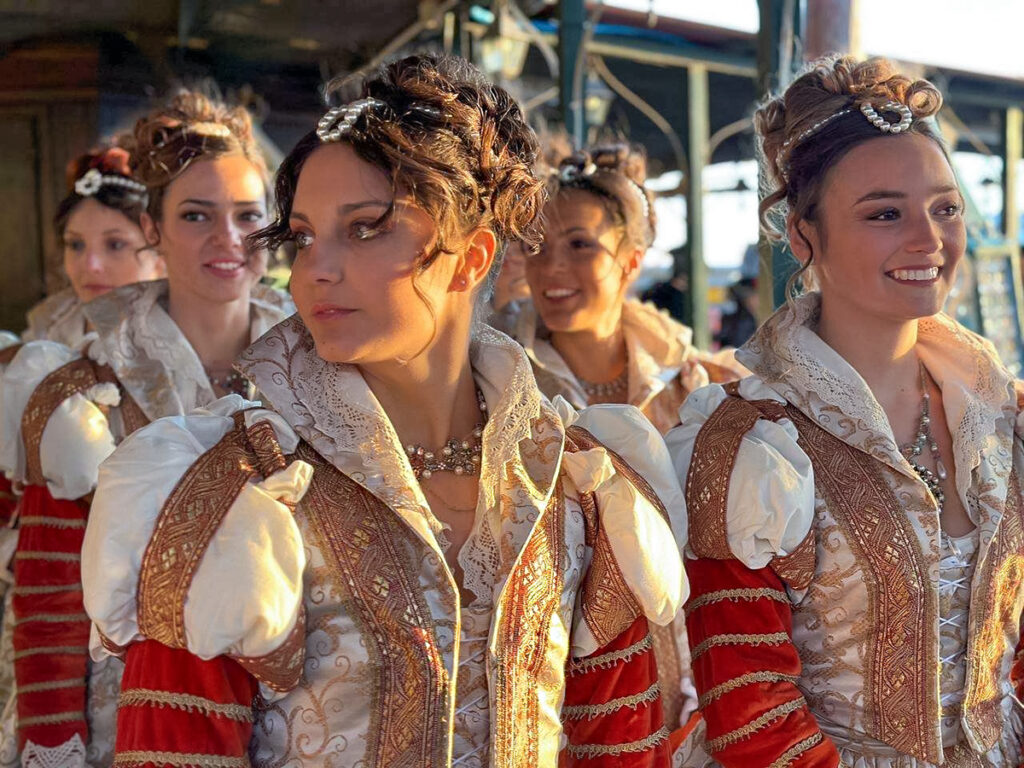
The celebration of the Maries included not only the blessing of the couples but also the random selection of the twelve most charming young women from the less affluent families in the city.
Each of these fortunate girls was entrusted to a wealthy family, tasked with providing them with clothes, jewelry, and a dowry to prepare them for marriage.
In the following days, a series of both civil and religious ceremonies took place, culminating in a sumptuous procession along the Grand Canal.
During this spectacle, the ‘Maries’ (as these selected girls were called) showcased their beauty and adorned treasures.
The celebrations involved festive dances, banquets, and other entertainments; admiring the Maries not only brought favorable wishes but also represented a true spectacle for the eyes of the male audience. As a result, the festivities extended for several days, sometimes up to two weeks, attracting a multitude of people from various parts of the world.
The Maries in Venice: An ancient ceremony preserved for centuries.

This is one of the oldest festivals that the Republic included among its public events, where the people played an important, leading role!
The ceremony seemed to have been established to increase marriages in a city that was still sparsely populated and to provide assistance to those in disadvantaged economic conditions.
Food was also distributed to the people, while other initiatives aimed to maintain a grateful relationship between the less affluent population and the wealthy noble families.
The symbolic significance the festival gradually acquired over time is evident.
The Doge, accompanied by the entire government entourage and nobility, attended the weddings in the adorned church, illuminated by hundreds of candles. Afterwards, they escorted the brides to San Marco, presented them with blessed candles, and invited them to a banquet at the Ducal Palace.
It is clear that the girls took on the predominant role during this celebration, as the future brides and mothers of strong and courageous Venetians, while the husbands remained faint and evanescent figures, overshadowed by the popular participation.
Contact your Hotel Germania!
Pirates, jewels, abductions,
...and the Venetian vengeance.

In the year 844, during the dogeship of Pietro Tradonico, or as some chroniclers report, in 946 under that of Pietro III Candiano, while a wedding ceremony was taking place at San Pietro, a group of Dalmatian pirates stormed into the church and amidst general astonishment abducted the young women, also taking possession of their precious chests.
The Doge himself immediately organized the pursuit of the pirates, leading the expedition. The Venetians reached the kidnappers near Caorle with their boats and killed them, freeing the young women and recovering their dowry.
Since then, the area where the clash occurred was named ‘Port of the Maidens’. Upon their return to Venice, the Doge and the liberators were welcomed with great enthusiasm.
Caorle's Reward, the Brave One.
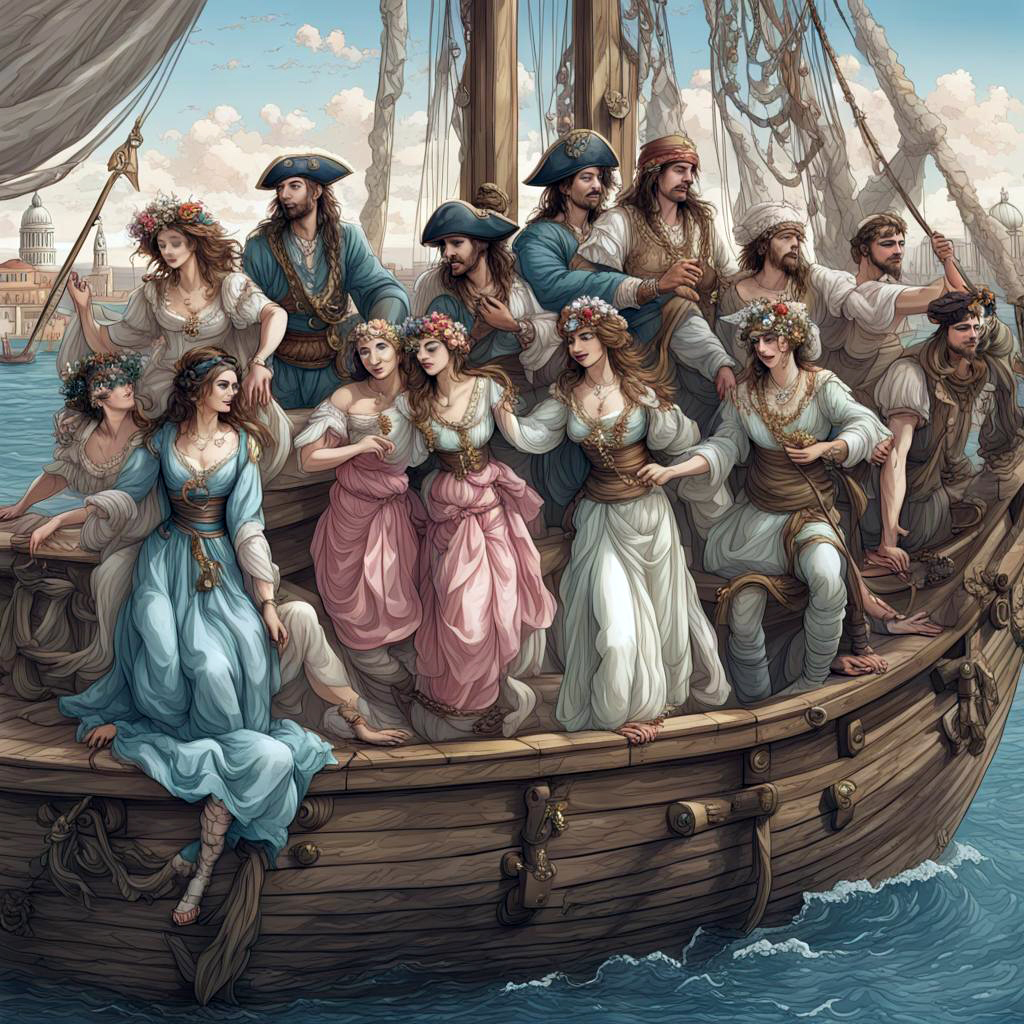
The Doge asked the casket makers, woodcarvers, and builders of the chests who had a significant part in the Caorle enterprise what reward they desired.
They replied that their wish was for the Doge to visit their parish and the church of Santa Maria Formosa every year on the same day as the abduction as a perpetual reminder of the event.
The request was promptly accepted and upheld for centuries. The visit to Santa Maria Formosa was firmly included in the Doge’s public visit schedule.
The parish priest would offer him a straw hat interwoven with threads of gold, wine, and fruit, perpetuating a tradition established by the casket makers from the moment of their request: if it rained, they would provide the Doge with a large straw hat for cover, and if he got thirsty during the journey, they would offer him wine for refreshment.
The celebrations lasted a week and culminated in a regatta in which the strongest and most handsome young men of the city participated.
Avarice, tumults, and wooden statues...
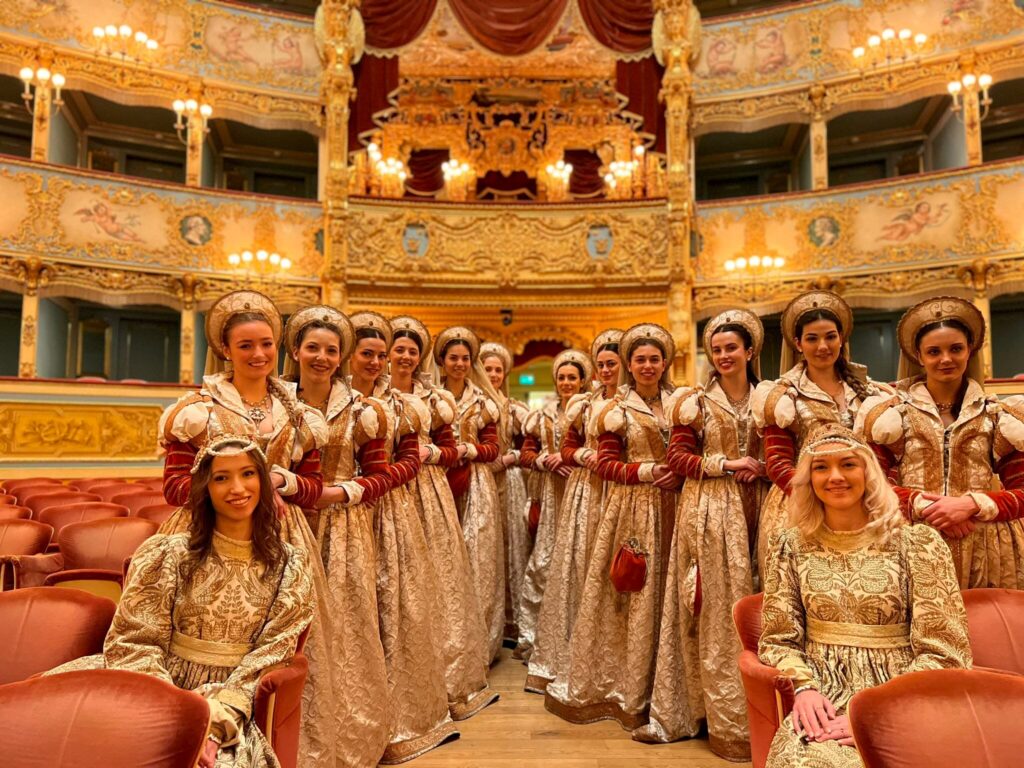
However, the celebration of the Maries was not without turbulence: often, the young women destined for marriage were subject to courtship, and in the worst cases, violence from onlookers who had come to admire them.
Moreover, the random selection of the Maries generated significant tensions among families, both among the less affluent (who protested if they were not chosen) and among the wealthy families (reluctant to bear the financial burdens required).
The celebration extended to nine days of festivities, but in 1272, following the raised protests, the number of Maries was initially reduced from twelve to four, and further decreased to three.
This reduction was primarily implemented to mitigate the considerable costs borne by the State and the aristocratic families, who disapproved of the excessive generosity towards the less affluent.
Consequently, real girls were gradually replaced by wooden statues, known as ‘Marione’ or ‘Marie de tola’ (Wooden Maries). Although dressed and adorned with jewelry, unlike their human counterparts, they were not endowed with a dowry, and at the end of the festivities, the assets returned to the families who owned the statues.
This change led the celebration to lose much of its original meaning, consequently undermining the support of the Venetians. The population reacted with dismay and anger, even attempting to sabotage the event.
When the Feast of the Maries disappeared...
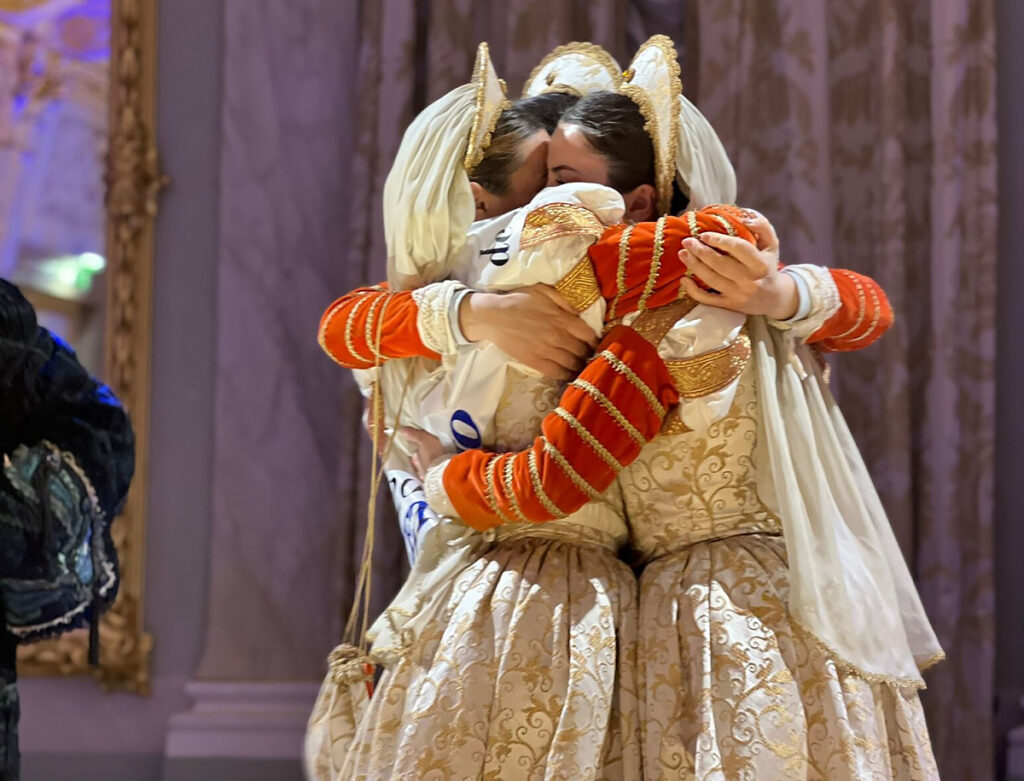
Over the years, the initial motivations dwindled. Even the visits to San Pietro and the wedding ceremony were completely replaced (starting from 1379) by the memory of subsequent events, namely the abduction and defeat of the pirates in Caorle.
Connected to the Church of Santa Maria Formosa were the casket makers who had their Craft School and devotional altar there.
Starting from 1343, even the twelve beautiful ‘flesh-and-blood’ girls remained only twelve painted wooden figures, ‘le Marie de tola,’ which often the people protested against by throwing stones and garbage. The term ‘de tola’ also derogatorily referred to flat-chested women without a shadow of a bosom.
In 1349, the Republic of Venice was forced to enact a law that punished with galley servitude anyone who threw vegetables at the procession of the ‘Marione.’
However, this measure only further compromised the reputation of the Feast of the Maries, which, after thirty years, was ultimately … abolished.”
The Feast is reborn.
And the Maries are more beautiful than ever!
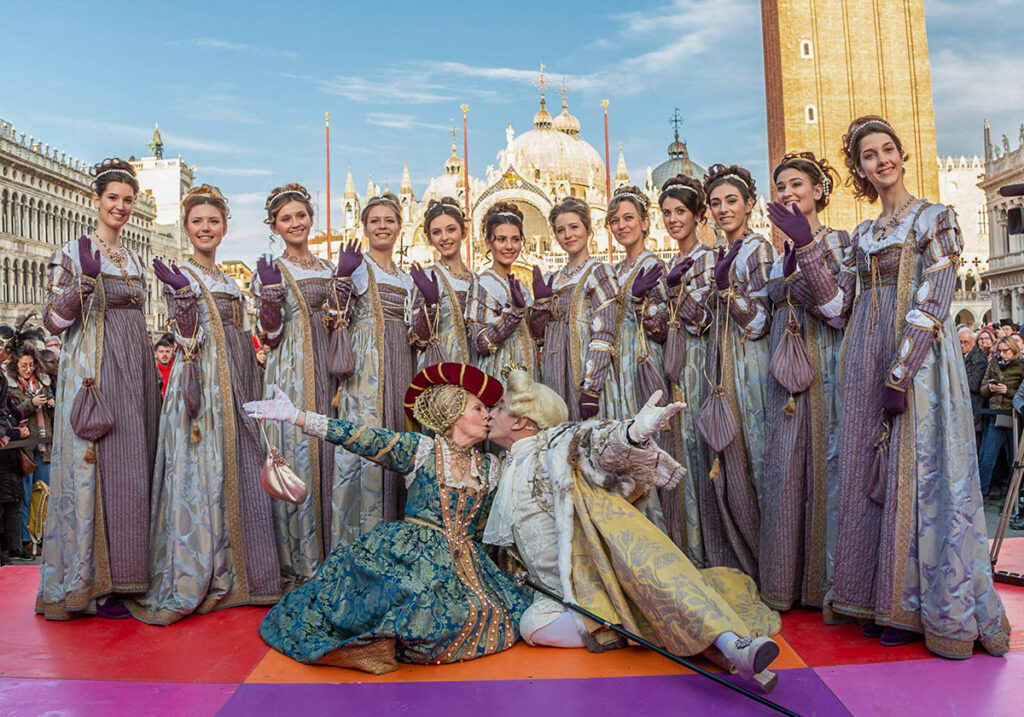
After seven centuries of abandonment, the Feast of the Maries was relaunched by Bruno Tosi on the occasion and opening of the Venice Carnival.
The success was immediate and growing; the modern version of the event quickly re-entered the Venetian imagination.
The modern Feast of the Maries during the Venice Carnival is a spectacular event that revives an ancient tradition.
The celebration begins with a magnificent parade of the twelve Maries, young women selected to represent Venetian beauty and elegance.
These Maries are chosen through a selection process and parade in sumptuous, richly decorated attire, adorned with luxurious jewelry that captures everyone’s attention.
The Marie parade takes place along the city’s most suggestive streets, offering a breathtaking spectacle for the numerous spectators crowding the streets.
In a blend of tradition and modernity, the twelve Maries showcase their elegance and grace, creating an enchanting atmosphere within the context of the Venice Carnival.
Beyond the parade, various cultural events, music shows, traditional dances, and entertainment for participants of all ages are organized during the Feast of the Maries.
This modern festival keeps alive the essence of the ancient celebration, offering an unforgettable experience that blends historical tradition with the contemporary charm of the Venice Carnival.


